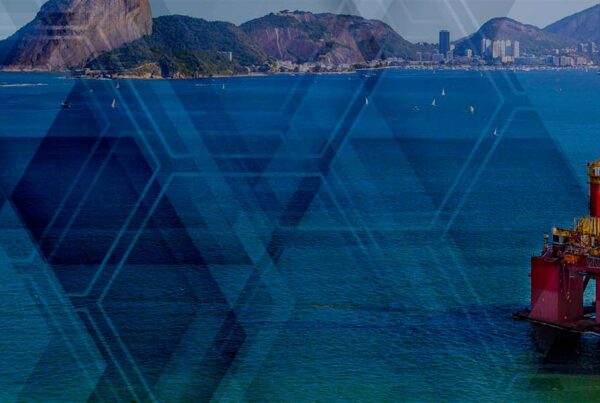The year 1974 saw the launch of Offshore Northern Seas, an obscure meeting of companies extracting oil and gas in the North Sea. Today this biennial event, rebadged ONS, attracts 65,000 visitors from more than 100 countries. It is no longer just about oil and gas, but covers areas as diverse as offshore wind, batteries, hydrogen and carbon capture and storage (CCS). But it remains a key date for oil and gas companies, not least because the trends featured at the event are vital for the industry’s future.
The theme of this year’s event was ‘trust,’ a commodity in short supply following Russia’s invasion of Ukraine in February. The Ukraine crisis overshadowed the debate at ONS, with much discussion of how oil and gas can help solve the energy trilemma of security, sustainability and affordability. There is clearly a role for oil and gas, and even Tesla boss Elon Musk declaring “we need more” at the present time. The question is how much and where from.
Norway, which as in previous years hosted ONS, was an apt location for this debate. High on the agenda was the discussion of whether the rich nation should be exporting more resources to its European neighbours, whether in the form of electricity, when its own citizens are in need, or low-cost fossil fuels, when it claims to be a leader in the transition to net zero.
More broadly, liquefied natural gas (LNG) was seen as being vital for overcoming the short-term energy crunch, but the consensus was also that regions such as Europe are accelerating away from such fossil fuels even more quickly than before the events in Ukraine. This highlights the fact that current opportunities in areas such as LNG could be short-lived and oil and gas players might be advised to use today’s high fossil fuel revenues to fund energy transition projects for tomorrow, particularly since global progress towards net-zero emissions is badly off target. The oil and gas industry is well aware of this opening. ONS this year boasted more decarbonisation technologies than ever before, and the event’s Norwegian hosts were at pains to demonstrate how much the country could contribute to net-zero efforts.
The direction of travel was highlighted in a Westwood Global Energy Group presentation by Stuart Leitch, senior analyst. All the Northwest European countries bordering the North Sea have set net-zero emissions targets, which equates to a wholesale replacement of fossil fuels with renewables. The UK, for example, is planning to have 50 GW of offshore wind by 2030, while cutting upstream oil and gas emissions by 50%. Norway meanwhile is looking for a 40% cut in upstream emissions and 30 GW of offshore wind by 2040.
Low-carbon industry growth
There was a strong showing from offshore wind developers and supply chain actors at ONS, all keen to take advantage of Norway’s pending licencing opportunities. Bolstering Norway’s energy transition credentials at the event was an announcement of the world’s first cross-border carbon storage deal, involving a Yara fertiliser plant in the Netherlands and the Northern Lights CCS project due online in Norway by 2024.
Elsewhere, the energy transition is leading to the emergence of important hydrogen and CCS clusters, such as the East Coast Cluster in the UK and Northern Lights in Norway. Alongside these big-ticket, medium-term bets, where project sponsors are just starting to take final investment decisions, ONS showcased a host of technologies, from batteries to solar, that can be scaled today. Perhaps one of the most obvious here-and-now opportunities is in leveraging technology and data, which can help improve efficiency and reduce emissions across all energy sectors.
What the oil and gas sector can and will make of this remains unclear. European players are clearly on board with the need to support the energy transition although there are differences in approach to the issue. Italy’s Eni, for example, has gone down the route of setting up clearly defined business units, such as Plenitude for renewables and Natural Resources for upstream oil and gas, and listing them separately. Others, such as Shell and Equinor, are keen to uphold the value of the integrated model.
The question remains if and when to make a full transition. Denmark’s Ørsted has gone for an all-in approach, with 90% of its global energy generation now coming from renewables. But it was clear from sessions at ONS that this journey has not been easy and might not be feasible for companies that are not mostly state-owned. Similarly, while there is recognition of the value of integrated operations there is also growing awareness that renewables and oil and gas are very different types of businesses in terms of operations, financing, returns and so on.
Outside Europe, the debate on if and how to adopt renewables is far less advanced, with many companies still grappling with how to just reduce scope 1 and 2 emissions. Here CCS looks set to play a role although yet again questions remain over its importance, with some saying it could be the only remaining opportunity for some oil and gas players in a decarbonised world.
A need for informed decisions
Against this backdrop, the sessions at ONS emphasised the need for a coherent strategy that allows financiers to engage with the oil and gas industry and addresses not just net-zero targets but also a wider need for environmental, social and corporate governance performance. Investment remains the Achilles heel in most oil and gas players’ energy transition narratives, with spend on low-carbon technologies and projects nowhere near matching the expenditure on traditional business activities.
This mismatch could perhaps be pardoned given the number of imponderables that the oil and gas industry faces in the energy transition. But time is running out, particularly for players in countries such as the UK and Norway where there are clear and sizeable opportunities in emerging industries such as CCS and low-carbon hydrogen.
Oil and gas companies that want a piece of this action need to position themselves rapidly within these industries, and to do so they need to start making informed decisions as soon as possible. With that in mind, Westwood has recently launched Atlas New Energies, an integrated market intelligence solution covering energy clusters, offshore wind, hydrogen, CCS alongside related oil and gas infrastructure in the UK and Norway.
Harnessing Westwood’s unmatched depth of data and heritage in the Northwest European region, the tool allows users to access and interrogate a database of over 250 new energies projects in the UK and Norway, providing greater transparency and a fuller understanding of the opportunities for companies. To find out more, request a demonstration now.
The digest: this month’s key headlines
- The Netherlands sets an offshore wind target of 70 GW by 2050 at the same time as a North Seas Energy Cooperation agreement between nine European states that could see 260 GW installed by mid-century.
- The Abu Dhabi National Oil Company sends the country’s first ever shipment of low-carbon ammonia from its Ruwais Fertiglobe complex to non-ferrous metal provider Aurubis in Germany.
- Aker Solutions joins the growing move towards emissions reduction transparency by committing to a 2050 net-zero plan using Science Based Target initiative methodologies.
- Australian mining giant Fortescue Metals Group earmarks USD$6.2 billion to achieve net zero emissions across Scope 1 and 2 by 2030.
- The European Commission approves a €5.2 billion spend on the Hy2Use hydrogen Important Project of Common European Interest.
- Nova Scotia in Canada targets 5 GW of offshore wind leases by 2030, to support green hydrogen production.
- The US Department of Energy launches an Earthshot scheme to slash the cost of geothermal generation.
- The Biden administration’s landmark Inflation Reduction Act gains Senate approval.






